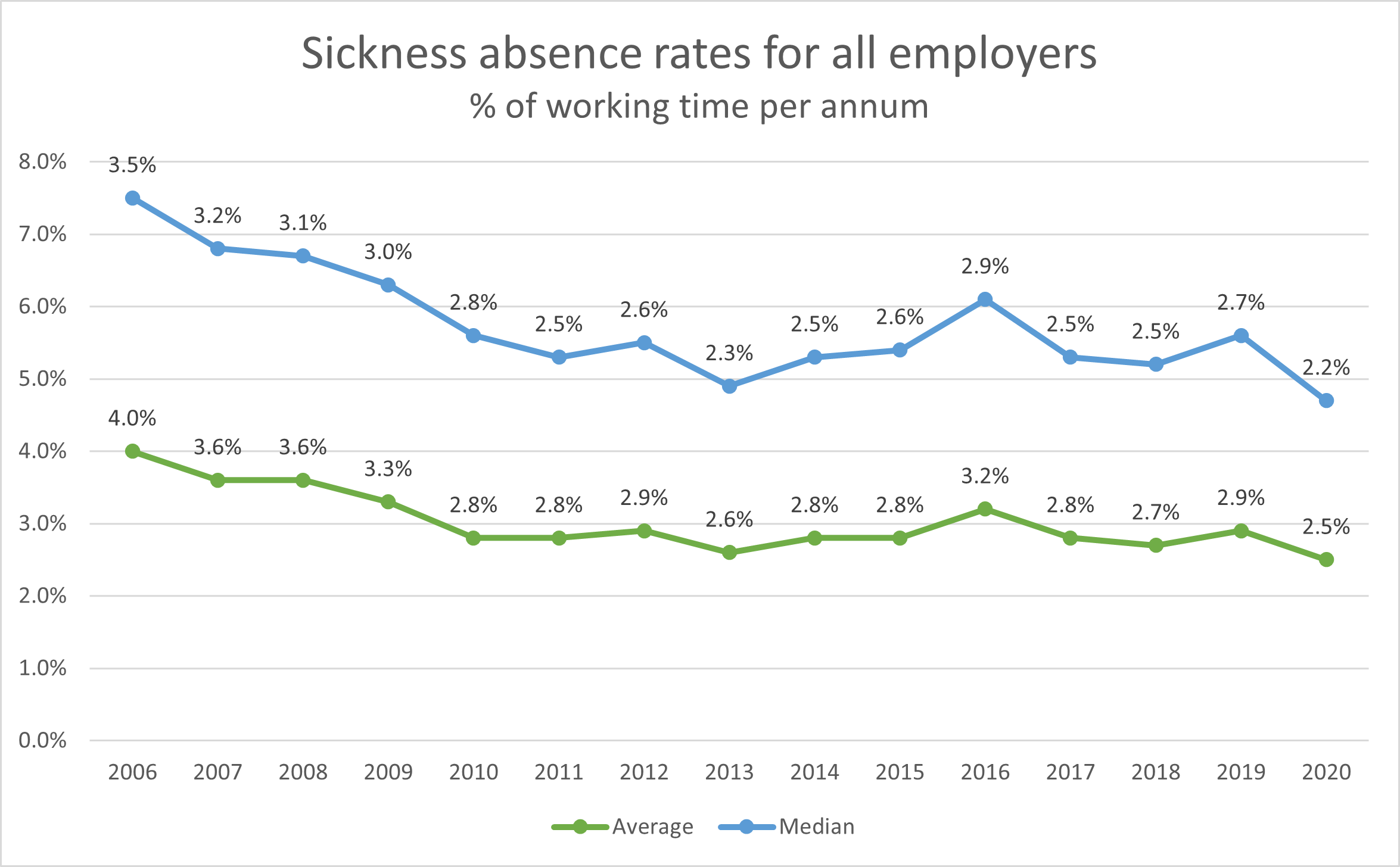Despite the global coronavirus pandemic, UK sickness absence fell last year, down to 2.2% of working time, compared to 2.7% in 2019 and 2.5% in 2018.
The latest figures* on sickness absence rates and costs showed that the average employee took five sickness days last year, falling by more than a full day from 6.4 days in 2019.
The restrictions in place to combat coronavirus contributed to absences decreasing, with homeworking, shielding, and the furlough scheme noted as potential reasons for the decrease and mitigating the levels of sickness absence among those employees who had contracted COVID-19. The marked decrease in sickness absence rates among employees who were working from home may lead to a permanent divergence in the way organisations both measure and manage sickness absence going forward.
Unsurprisingly, sectors where job roles are unable to work from home saw higher levels of sickness absence rates. Manufacturing and production organisations were more likely to report an increase in sickness absence rates with almost four in 10 (38%) doing so. In contrast, just over one in five (23%) private-sector-services organisations reported an increase with a significant three in five (60%) reporting a decrease.
But it was the public sector which saw the highest levels of sickness absence in 2020, with a median of 2.6% and an average 2.8% of working time lost per employee. While there may have been roles suitable to working from home within this sector, many employees will have been in frontline roles and not only had to continue attending the workplace but will also have been more exposed to contracting COVID-19.
The cost of sickness absence in 2020 stood at an average of £503 and a median of £390 per employee. This represents a fall from 2019 costs which stood at a median of £568 and an average of £544 per employee. However, measuring the cost of sickness rates was not consistent across all organisations surveyed, with some failing to record the cost of sickness absence at all. Measuring the cost of absence, including accounting for the wider ramifications of an absent employee such as a fall in productivity in their team, or the impact it has on customer service can provide organisations with key metrics that could demonstrate HR’s value to the business.
Noelle Murphy, senior HR practice editor at XpertHR, comments: “A fall in sickness absence is perhaps an unintended consequence of the restrictions put in place to mitigate COVID-19, but considering that a large portion of the workforce was working from home, isolating, or working with strict COVID-19 safety measures, it’s easy to understand this decline.
“Working from home is set to continue to some extent in hybrid working arrangements, and with it, a new set of challenges for our HR community. We know that adaptations for the post pandemic world will touch each point in the employment lifecycle and people management – how we measure and manage sickness absences is no exception. It’s vital that HR professionals arm themselves with the right tools, data, and guides to shift their approach for this new world, ensuring ongoing effective management of sickness absence and employee wellbeing.”
*from XpertHR’s annual survey









